 advertisements advertisements
|

|
SpaceX's Demo-1 Crew Dragon splashes down from space station
March 8, 2019 — SpaceX's first Crew Dragon is back on Earth, having advanced the day when astronauts will next launch to space from the United States and becoming the first spacecraft to splash down in the Atlantic Ocean in 50 years.
The commercial space capsule landed from the International Space Station on Friday (March 8), bringing to an end SpaceX's Demo-1 (DM-1) mission. The 6-day, uncrewed test flight was flown to show NASA that the Crew Dragon could safely rendezvous, dock, undock and return from the orbiting outpost, prior to it doing the same with astronauts on board later this year.
Descending under parachutes, the Crew Dragon touched down off the east coast of Florida at 8:45 a.m. EST (1345 GMT), where a SpaceX ship was waiting nearby to recover it from the water. The last time that a spacecraft splashed down in the Atlantic Ocean was half a century ago on March 13, 1969, when the Apollo 9 crew returned from Earth orbit on the command module "Gumdrop."
"We want to take a moment to recognize this milestone accomplishment," said NASA astronaut Anne McClain, an Expedition 58 flight engineer aboard the space station, after the Crew Dragon departed the orbiting laboratory on Friday. "Fifty years after humans landed on the moon for the first time, America has driven a golden spike on the trail to new space exploration feats through the work of our commercial partner SpaceX and all the talented and dedicated flight controllers at NASA and our international partners."
The Crew Dragon undocked from the space station at 2:32 a.m. EST (0732 GMT) on Friday. With two small, successive thruster firings, the capsule slowly backed away from the international docking adapter mounted at the front of the orbital lab, where the vehicle had been attached since Sunday.
Additional engine firings increased the separation between the Crew Dragon and station, until 7:53 a.m. EST (1253 GMT), when a 15-minute-long de-orbit burn was executed to slow the spacecraft and begin its descent to Earth.
The Crew Dragon's entry into the atmosphere was a point of particular concern for SpaceX CEO Elon Musk.
"I would say hypersonic re-entry is probably my greatest concern," said Musk at a post-launch press conference on March 2, explaining that the Crew Dragon's asymmetric shape, a result of its abort motor housings, could cause the vehicle to enter an unstable roll.
Musk also voiced concern over the Crew Dragon's parachutes and whether they would be able to guide the capsule to a safe splashdown at the designated point.
The sight of the four orange and white main parachutes lowering the Crew Dragon to the ocean on Friday set those concerns aside.
Returning to Earth on board the Crew Dragon were 330 pounds (150 kilograms) of supplies and hardware from the space station, including several "cold bags" with science research results. Making the round trip in a seat aboard the Crew Dragon was "Ripley," a spacesuited, anthropomorphic test device (or "dummy") that was named by SpaceX after actress Sigourney Weaver's character in the "Alien" movie franchise.
Also launched and landed on the Crew Dragon was an Official Flight Kit (OFK), a small package of mementos to be distributed to team members who contributed to the mission's success and to partners in the International Space Station program. (The DM-1 mission OFK contents are detailed below.)
A Celestial Buddies' Planetary Pal Earth plush doll, flown by SpaceX as a "zero-g indicator" for the DM-1 launch, was left on board the space station, where McClain had taken to using it for social media photo updates.
With the Crew Dragon now back on Earth, it will be returned to shore, unloaded of its cargo and then inspected and serviced by SpaceX. The Hawthorne, California-based company plans to reuse the same spacecraft for an in-flight abort test to be carried out before Demo-2, the crewed flight test, launches on a new Crew Dragon with NASA astronauts Robert Behnken and Douglas Hurley to the space station. |
|
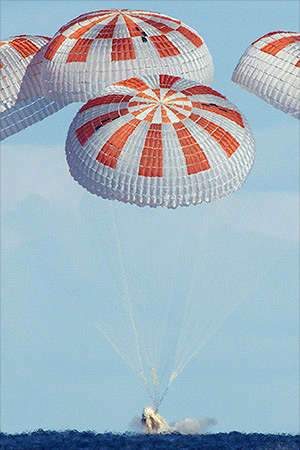
SpaceX's DM-1 Crew Dragon splashes down from the International Space Station in the Atlantic Ocean on March 8, 2019. (SpaceX)
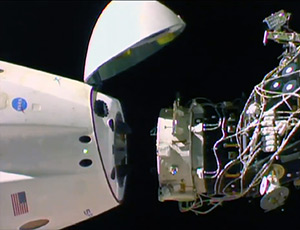
SpaceX's Crew Dragon (at left) separates from the International Space Station to return to Earth on March 8, 2019. (NASA TV)
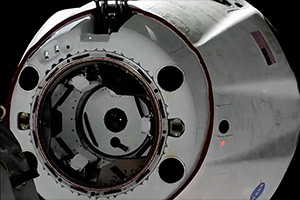
SpaceX's Demo-1 Crew Dragon recedes after undocking from the International Space Station on March 8, 2019. (NASA TV) |
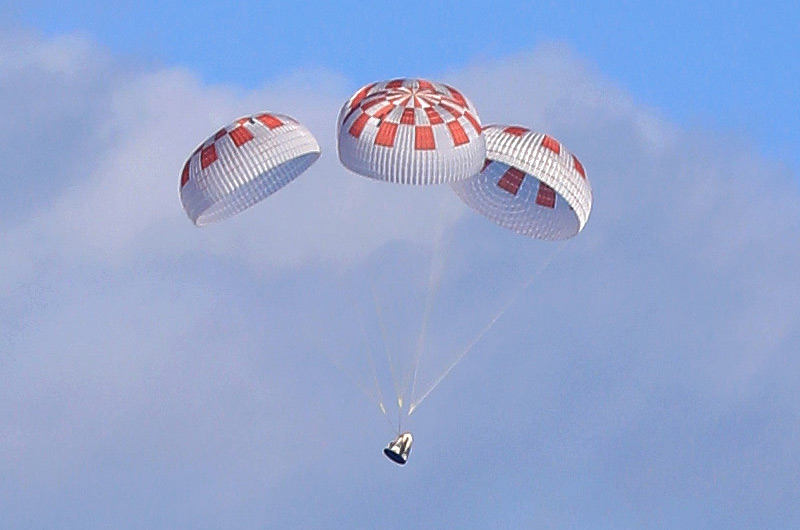
SpaceX's Crew Dragon descends under four main parachutes to a splashdown in the Atlantic Ocean on Friday, March 8, 2019. (NASA/Cory Huston) |
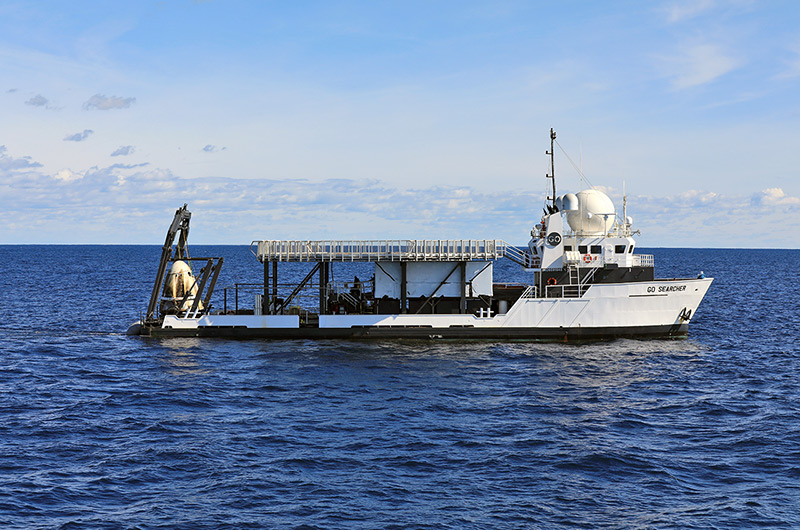
SpaceX's Crew Dragon on the deck of the Go Searcher recovery ship after splashing down from the International Space Station. (NASA/Cory Huston) |
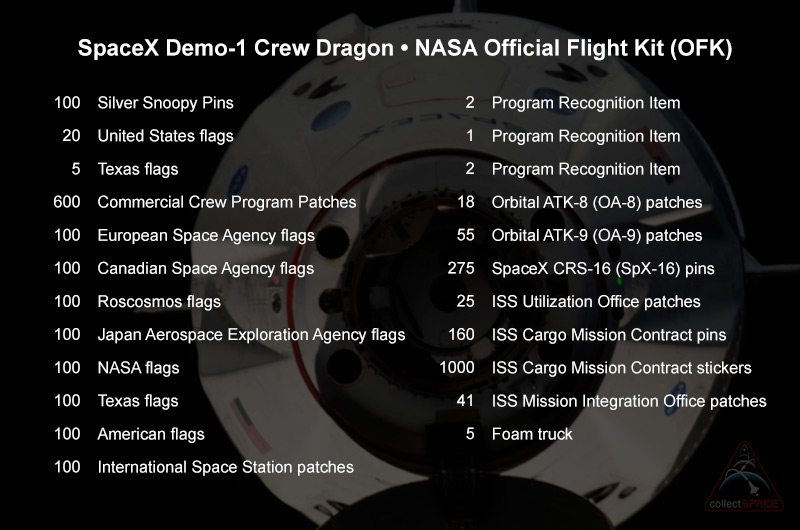
|

© 1999-2025 collectSPACE. All rights reserved.
|
|

|

|
